
Solana vs Bitcoin: How Does Solana's Transaction Speed Compare?
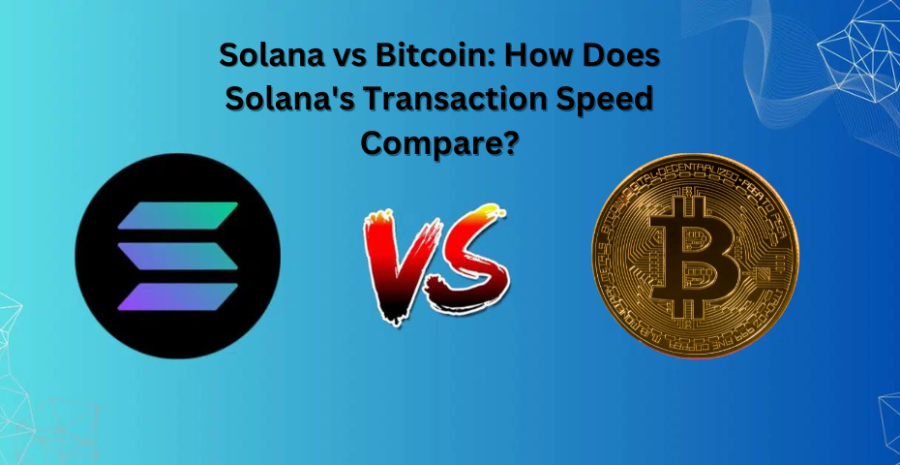
The blockchain world is vast, with numerous platforms competing for dominance, each offering unique solutions to existing challenges. Two of the most talked-about platforms today are Bitcoin and Solana. Bitcoin, created in 2009, was the first blockchain and has set the standard for decentralized currency.
As the pioneer in blockchain technology, Bitcoin introduced the world to decentralized digital transactions, allowing for peer-to-peer value transfers without relying on intermediaries like banks or governments. Over the years, Bitcoin has become synonymous with cryptocurrency, its name being almost interchangeable with the term itself.
However, as blockchain technology evolved, newer platforms like Solana emerged, seeking to address some of Bitcoin's limitations, particularly in terms of scalability and transaction speed.
One of the most significant points of comparison between Bitcoin and newer blockchain platforms like Solana is transaction speed. Bitcoin, while revolutionary, faces challenges with scalability and processing speeds due to its Proof-of-Work (PoW) consensus mechanism. This leads to a bottleneck in transaction throughput, with Bitcoin processing around 7 transactions per second (TPS). This limitation has sparked criticism, particularly as the demand for blockchain solutions grows, and more users and applications flock to the network.
Solana, on the other hand, presents itself as a blockchain designed to handle thousands of transactions per second without compromising decentralization or security. It utilizes a Proof-of-Stake (PoS) consensus mechanism combined with a unique innovation called Proof of History (PoH) to vastly improve its transaction throughput.
Solana's network claims to handle up to 65,000 TPS, which sets it apart from Bitcoin and even many other blockchain platforms. This remarkable difference in speed between Bitcoin and Solana has drawn the attention of developers, businesses, and crypto enthusiasts alike.
But how do these platforms really compare when it comes to transaction speed, and what implications do these differences hold for their future adoption and use?
In this blog, we will explore ten critical points of comparison between Bitcoin and Solana in terms of transaction speed. By the end of this analysis, you will better understand how each platform functions, the reasons behind their differing speeds, and what this means for the future of blockchain technology.
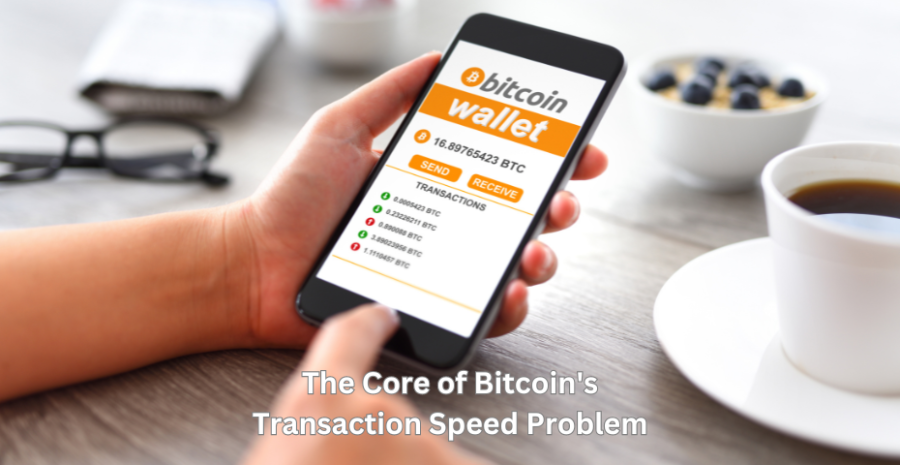
Bitcoin's transaction speed is primarily hindered by its Proof-of-Work (PoW) consensus mechanism. This process involves miners competing to solve complex mathematical puzzles, with the winner earning the right to validate the next block of transactions.
The time it takes to mine each block is approximately 10 minutes, creating a natural limit to how many transactions can be processed per second. On average, Bitcoin handles around 7 TPS, which is far from ideal for a global payment system. This slow throughput has been one of Bitcoin’s biggest drawbacks, especially as demand grows.
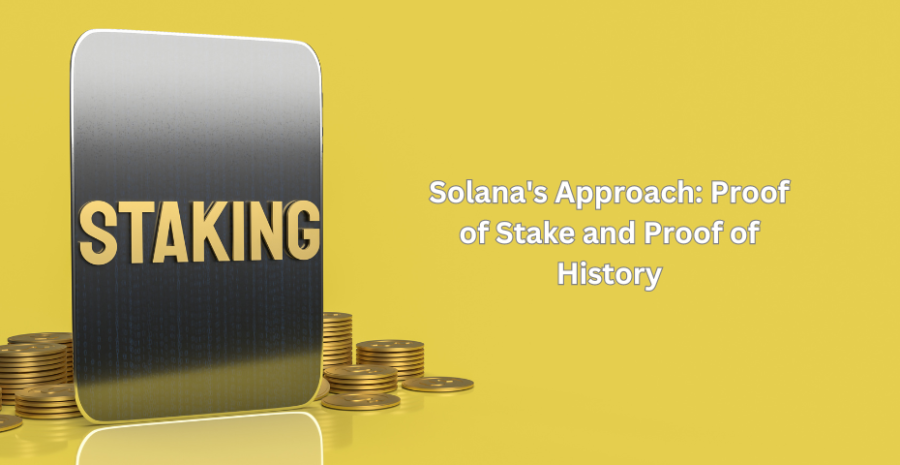
Solana takes a different approach by utilizing a Proof-of-Stake (PoS) mechanism, where validators are chosen based on the amount of cryptocurrency they hold and are willing to "stake" as collateral.
This is combined with Proof of History (PoH), which timestamps transactions and creates a cryptographic sequence of events that automatically validates transaction order. This dual approach enables Solana to achieve lightning-fast transaction speeds.
Unlike Bitcoin, which relies on energy-intensive mining, Solana validators can process transactions almost instantaneously, resulting in a network capable of handling 65,000 TPS.

Bitcoin’s relatively slow transaction speed comes with a trade-off: robust security. The PoW system is extremely secure due to its decentralized nature and the computational power required to alter or tamper with the blockchain. This security is one reason why Bitcoin remains the most trusted and valuable cryptocurrency.
Solana, while significantly faster, faces ongoing scrutiny about whether its PoS system, although faster, can match Bitcoin's level of decentralization and security.
However, Solana's innovative design shows promise in maintaining a high level of security while prioritizing speed.
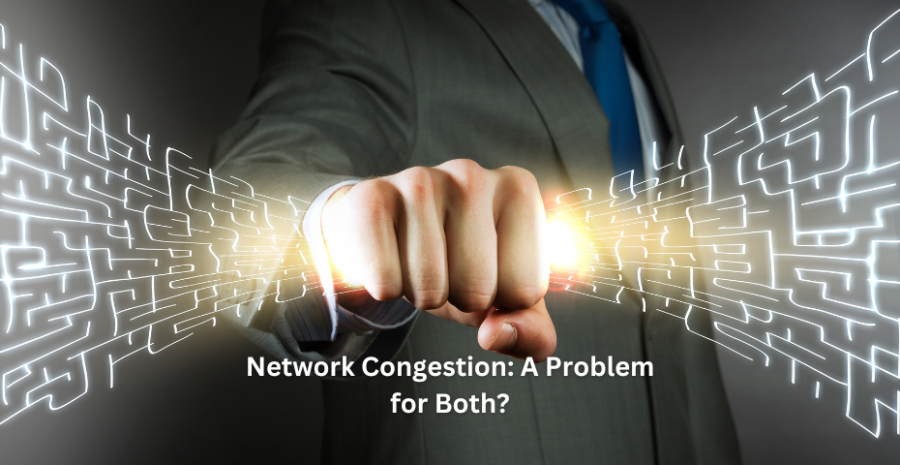
Network congestion is a problem that affects both Bitcoin and Solana but in different ways. For Bitcoin, network congestion typically occurs when there’s a spike in demand, leading to longer transaction times and higher fees.
This is due to its limited TPS capacity. In contrast, Solana can process far more transactions per second, making it far less prone to congestion.
However, Solana’s speed comes at the cost of occasional network outages, as the system sometimes struggles to maintain its high throughput during periods of intense activity. This has led some to question the long-term sustainability of its infrastructure.
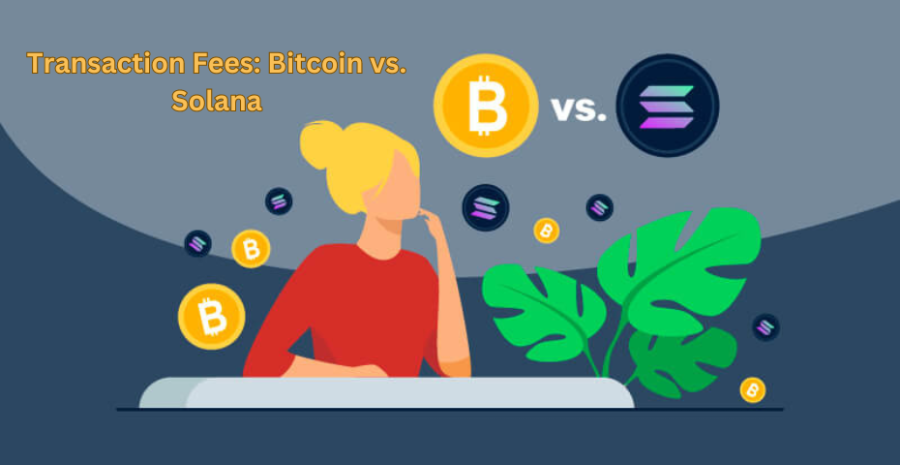
Another critical factor influenced by transaction speed is transaction fees. On Bitcoin, slower speeds often lead to higher fees as users compete to get their transactions included in the next block.
This has made Bitcoin transactions impractical for smaller, everyday purchases.
Solana, thanks to its higher TPS, can offer extremely low transaction fees, often less than a cent, making it an attractive option for microtransactions and decentralized applications (dApps) that require frequent and fast transactions.
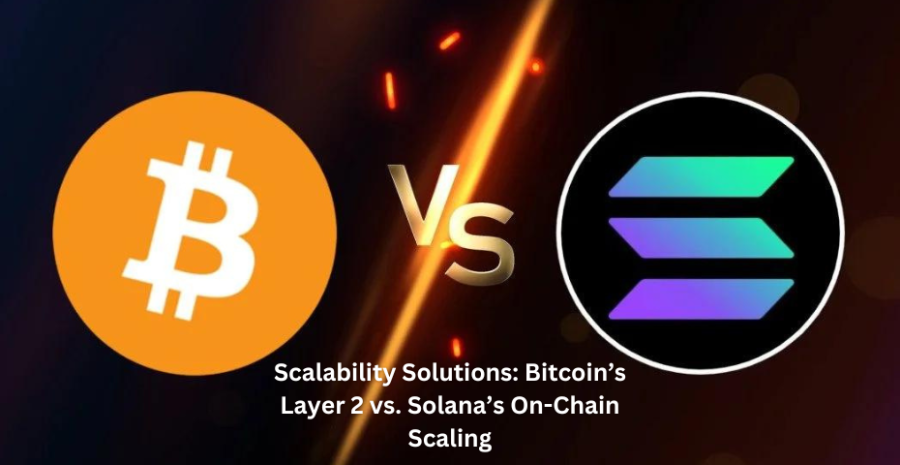
Bitcoin has sought to address its scalability issues through Layer 2 solutions, such as the Lightning Network, which enables off-chain transactions that settle on the Bitcoin network later.
While this solution boosts transaction speed and reduces fees, it adds complexity and requires users to rely on secondary networks. Solana, by contrast, scales directly on-chain through its PoS and PoH mechanisms.
This allows for fast, direct transactions without needing additional layers, although it introduces its own set of challenges, particularly in maintaining security and decentralization.

Bitcoin's Proof-of-Work mechanism is notoriously energy-intensive, consuming massive amounts of electricity. This has led to criticism regarding its environmental impact.
Solana's Proof-of-Stake system is far more energy-efficient, as it doesn’t require mining. Instead, validators are chosen based on their staked tokens, drastically reducing the network’s carbon footprint.
This difference makes Solana more attractive to environmentally conscious developers and users.
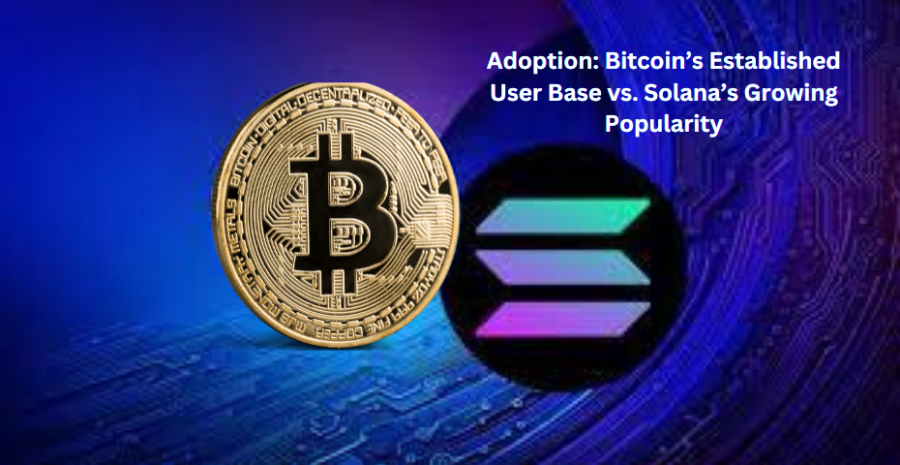
Bitcoin enjoys a massive, established user base and a strong reputation as the first and most trusted cryptocurrency. Its adoption is widespread across industries and countries.
Solana, while much newer, is quickly gaining popularity due to its speed and low fees, especially in the decentralized finance (DeFi) and non-fungible token (NFT) sectors.
Its growing ecosystem is attracting developers and users alike, though it still has a long way to go before catching up to Bitcoin’s global recognition.
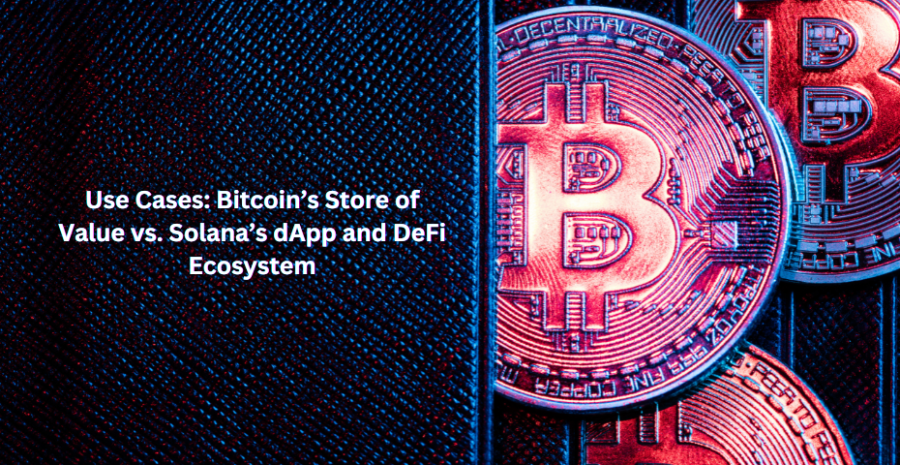
Bitcoin is primarily seen as a store of value, often compared to digital gold. Its slow transaction speeds and high fees make it less suitable for day-to-day transactions, but it remains a preferred asset for long-term investors.
Solana, on the other hand, is designed for a broad range of use cases, including decentralized applications (dApps), decentralized finance (DeFi), and NFTs.
Its fast transaction speeds and low costs make it ideal for these high-volume, real-time applications.

Looking to the future, Bitcoin’s focus will likely remain on maintaining security and stability, continuing to serve as a reliable store of value.
Solana, on the other hand, is positioned as a platform for innovation. Its focus on transaction speed, low fees, and energy efficiency make it well-suited for the growing world of decentralized applications. However, its ability to maintain network stability under heavy demand will be critical for its long-term success.
Both networks will likely coexist, serving different purposes within the broader blockchain ecosystem.
The comparison between Bitcoin and Solana in terms of transaction speed underscores the broader trade-offs in the blockchain world. Bitcoin’s slow but highly secure PoW system remains a key feature that ensures its position as the most trusted cryptocurrency for long-term value storage.
While its 7 TPS may seem inadequate compared to Solana’s incredible 65,000 TPS, Bitcoin is less focused on speed and more on providing a secure, decentralized, and tamper-proof network.
For Bitcoin, the Lightning Network and other Layer 2 solutions aim to improve transaction speed without compromising the underlying security and decentralization principles that define the platform.
On the other hand, Solana represents a next-generation blockchain, emphasizing speed and scalability with its PoS and PoH mechanisms. Its ability to process thousands of transactions per second at minimal cost makes it a leading contender for decentralized applications and real-time digital transactions.
However, its relatively short track record and occasional network outages highlight the ongoing challenges of balancing speed with long-term stability and security. As the blockchain ecosystem continues to evolve, the complementary strengths of both Bitcoin and Solana suggest that neither is necessarily better, but rather suited for different roles within the digital economy.
In conclusion, while Bitcoin may remain the go-to for those looking for a secure and stable store of value, Solana is carving out a space as a high-performance platform for the decentralized future.
Whether one prioritizes security or speed will determine which platform best suits their needs in this dynamic, rapidly changing industry.
The debate between Solana and Bitcoin in terms of transaction speed highlights the contrasting approaches and trade-offs within the blockchain ecosystem.
Bitcoin, as the pioneer of cryptocurrencies, was not built with speed in mind but rather with a focus on security, decentralization, and long-term value.
Its Proof-of-Work mechanism, though energy-intensive and relatively slow, has created an extremely secure network that has stood the test of time.
With only about 7 transactions per second, Bitcoin is often criticized for its scalability issues, but its Lightning Network solution aims to improve transaction speeds while maintaining the core values that made Bitcoin the first and most trusted digital currency.
.jpeg)
In contrast, Solana was designed with the future of blockchain applications in mind, addressing Bitcoin’s speed limitations with innovative technologies like Proof of Stake (PoS) and Proof of History (PoH).
Solana’s impressive ability to handle up to 65,000 transactions per second (TPS) without sacrificing low transaction fees has made it an attractive option for developers, particularly in the rapidly growing areas of decentralized finance (DeFi) and NFTs.
However, Solana’s focus on speed has led to some concerns about its long-term stability and network outages, which raises questions about whether it can maintain high performance at scale.
Ultimately, the choice between Bitcoin and Solana depends on what users value most. Bitcoin offers unmatched security and is ideal for long-term investors looking for a reliable store of value, while Solana’s lightning-fast speeds make it an excellent choice for users seeking efficiency in real-time applications and decentralized services.
Both blockchains serve distinct purposes, and rather than one replacing the other, their coexistence demonstrates the diverse and growing needs of the crypto ecosystem.
As blockchain technology continues to evolve, it’s likely that both Bitcoin and Solana will play pivotal roles in shaping the future of decentralized finance and beyond.
(22).png)
About: Andries vanTonder (65)
Over 45 years selfemployed
He is a Serial Entrepreneur, an Enthusiastic supporter of Blockchain Technology and a Cryptocurrency Investor
Find me: Markethive Profile Page | My Twitter Account | My Instagram Acount | and my Facebook Profile.
